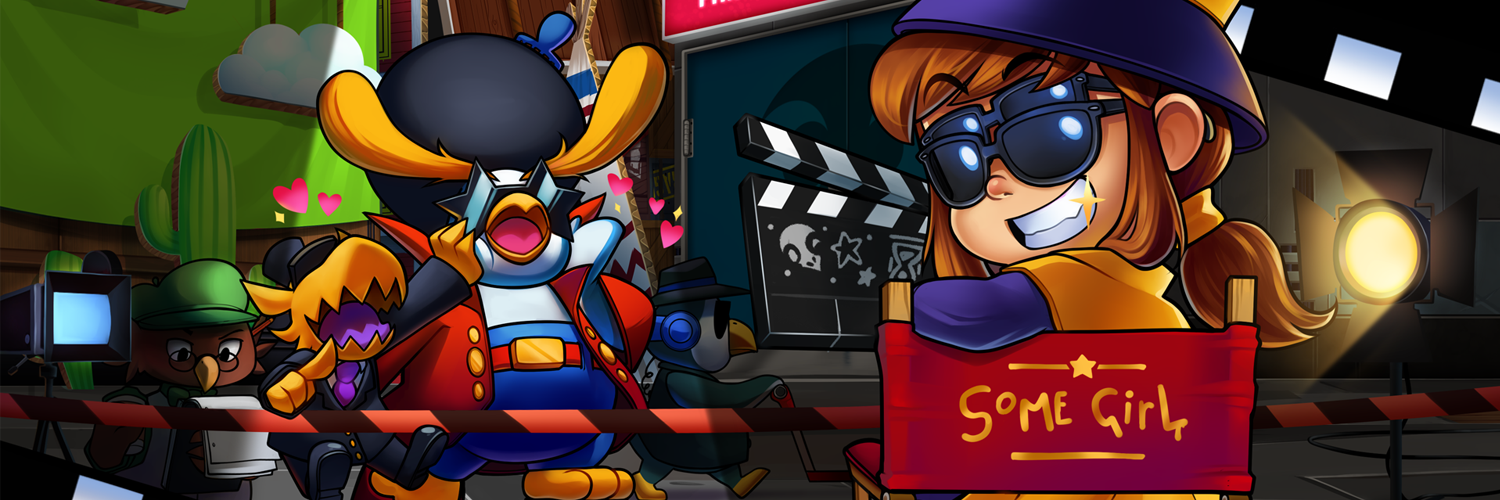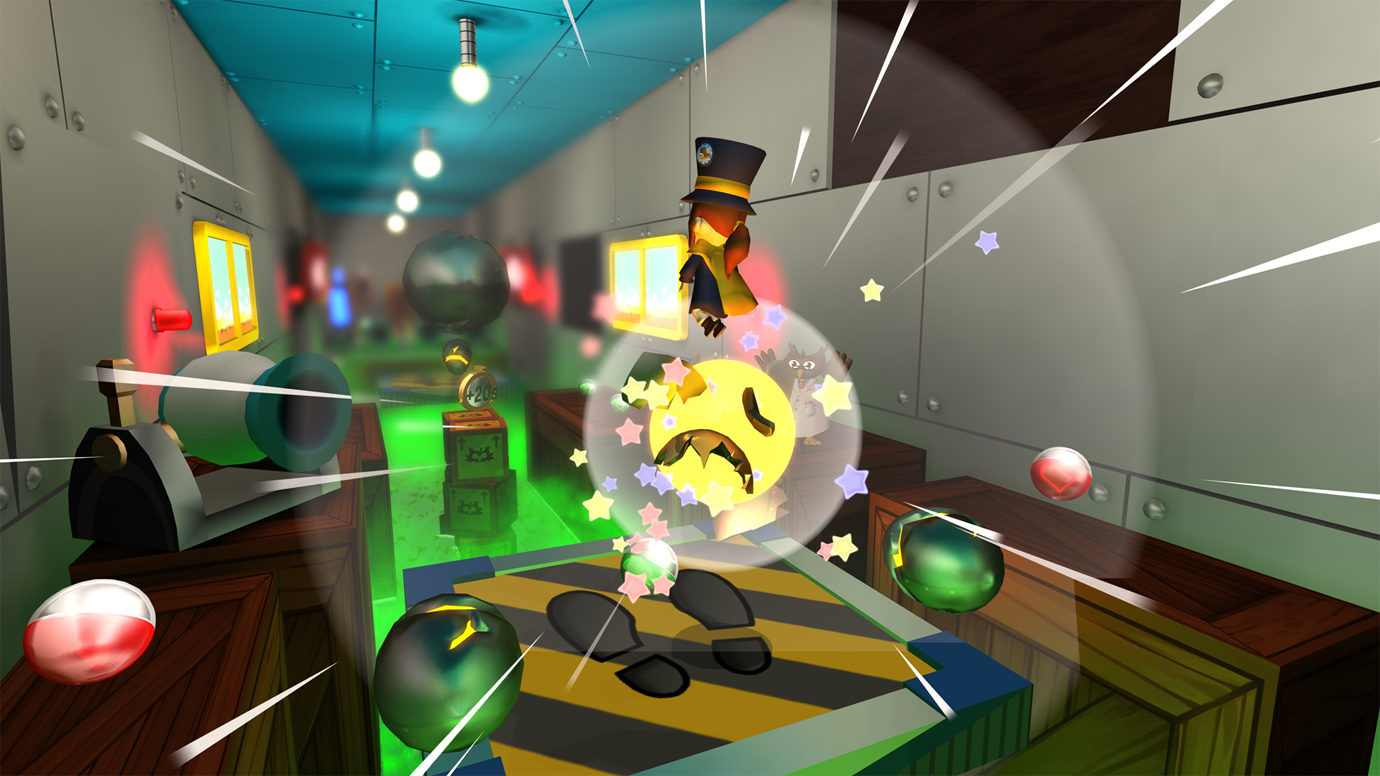
A Hat in Time PC Review
It seems like most games I review these days have been Kickstarted. I think it really shows what a positive force the gaming community can be when pulled together over a common goal. This time around it was for A Hat in Time, a throwback to old-school platformers that takes heavy inspiration from Super Mario 64 and the likes, that managed to raise almost $300,000 (~£230,000); 1000% of their original pledge goal. And although the game currently only takes around 8 hours to fully complete, thanks to the sheer amount of extra funding they received, it seems it will be extended via future DLC installments according to some of the unavailable stretch goals that promise extra chapters and a New Game+ mode.
The game starts when a particularly moronic member of the mafia from the planet below smashes a hole in Hat Kid’s spaceship, in order to collect some kind of tax, and all of her ‘time pieces’, as well as herself, are sent raining down on the world below. This is a particularly concerning issue as her ship apparently runs on the energy of these magical time-manipulating objects so she can’t return home (wherever that may be) without them. Thus begins the quest for the 40 missing time pieces, which I found pretty strange as far as collectibles go because there are basically no time-controlling abilities or puzzles in the entire game. They may as well have just been bits of stardust or Rubik’s cubes. Nethertheless, the game begins from there with a clear goal in focus – collect.

There are 3 different collectibles to find – gems that act as currency to purchase power badges, balls of yarn that are used to unlock new hats, and obviously time pieces, which are required to unlock new areas and are collected upon completing main objectives. Being labelled a ‘collect-a-thon’, I expected to be progressing through open worlds of varying sizes that each come with their own contained challenges. Instead, there’s an odd mix of the different styles of platforming games. For example, the first three worlds pop the player back out to the hub world upon collecting a time piece, similar to the older 3D Super Mario games, where as the fourth world (my personal favourite) does not. Instead, it allows the player to just explore and complete the missions within freely. In the same vein, the first, third, and fourth worlds are what I would consider ‘open’, whereas the second is strictly linear, even containing stealth sections and story-focussed objectives. I found this disconnect quite jarring and instead of feeling like it was keeping things interesting by mixing it up, it just came off as confusing. I had no idea what was happening at first in the the fourth and final world, as all of a sudden I was granted the freedom to explore and complete sections in any order I pleased, which I had been wanting to do all along.
The gameplay is pretty much what anyone would expect from a 3D platformer – running, jumping, and avoiding obstacles. In that respect it doesn’t really do anything to stand out above the rest with regards to challenge or any kind of unique mechanic. There are different hats to unlock, each providing a new power that can be switched between on the fly, but even those are not something exactly new to the world of platformers. The power to ground pound, run, or throw bombs etc are relatively old tools that are simply presented in a new way. The badges are much the same. Badges can be purchased using gems from an incredibly interesting looking character that is constantly glitching out in an extraordinary fashion but disappointingly whose backstory is never delved into. They provide benefits such as taking no fall damage or the power to shoot laser beams but must be equipped to activate, with three being the max. What I don’t understand, though, is why they need to be limited – why can’t the player just have all of them equipped? None of them are game-breaking and one of them, the hookshot, is absolutely imperative to have on, essentially reducing the max slots back to two.

It’s odd decisions like these and the need to have the player select the missions from the hub world instead of from within the current area that have me believe A Hat in Time follows the mechanics of the older games it tries to replicate a bit too closely. Instead of honouring the nostalgic gems whilst improving on them, it seems to follow them too blindly and in doing so loses anything that would have made it unique over any other platformer. In fact, I’d say that’s quite indicative of the entire experience, with exception to the awesome boss fights that are surprisingly challenging and come with some seriously rocking music. What A Hat in Time does do to stand out, however, is introduce incredibly wacky and colourful worlds and characters. I mean, a movie studio run by birds and a place called ‘Mafia Town’ just couldn’t be found anywhere else. The dialogue is often funny, however silly, and brings a lot of life to the world, allowing the player to just let themselves go for a while and have a little fun.
True, the main plot is pretty much forgotten about for the entire game until the climax but it’s the little stories within each of the four worlds that are more interesting anyway. Hat Kid gets thrown into all kinds of crazy situations, bouncing around from being a movie star to some kind of shadow monster’s lackey and more. The playful childishness of the experience is really what pulls it all together and even though it’s by no means a bad game – it was definitely the angle it needed to hold together all the loose parts. After all, nostalgia can only do so much before players realise that games have moved on and evolved for a reason, especially when an absolute titan like Super Mario Odyssey was released almost besides it and flawlessly shows how to truly mix the old and new into something else entirely. In all I’d recommend A Hat in Time as a quick pick up game when there’s a lull in the market (which 2017 definitely hasn’t had), but not at it’s current price of £22.99, especially with the amount of irritating bugs I encountered throughout.
